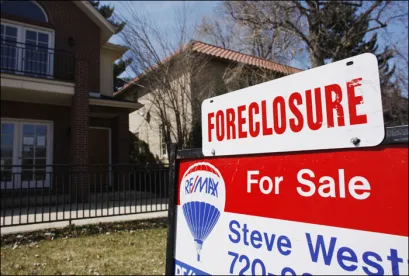The Ninth Circuit recently limited the availability of diversity jurisdiction for certain cases with claims involving mortgage loan modifications. Specifically, in Corral v. Select Portfolio Servicing, Inc., the Ninth Circuit held that, where the plaintiff-borrower “seeks only a temporary stay of foreclosure pending review of a loan modification application … the value of the property or amount of indebtedness are not the amounts in controversy.” — F.3d —-, 2017 WL 6601872, at *1 (9th Cir. Dec. 27, 2017). Rather, to satisfy the amount in controversy requirement in such cases, parties must demonstrate that the value of the temporary delay in foreclosure exceeds $75,000, “such as the transactional costs to the lender of delaying foreclosure or a fair rental value of the property during pendency of the injunction” (in addition to any compensatory damages plaintiffs may be seeking). Id. at *5.
In Corral, the plaintiff-borrower filed an action in California state court seeking to enjoin a foreclosure sale until her loan modification application was reviewed and also seeking unidentified compensatory damages and costs. Id. at *2, 3. Defendant removed the action to federal court arguing that the $75,000 amount in controversy requirement had been met because the original principal balance on the loan was $680,000 and the total outstanding indebtedness was in excess of $800,000. Id. at *2. The district court agreed and denied plaintiff’s motion to remand. Id.
On appeal, the Ninth Circuit reversed. In cases like Corral where the plaintiff is seeking injunctive relief, the amount in controversy is “measured by the value of the object of the litigation.” Id. at *4. Because the plaintiff in Corral was only seeking a temporary stay pending the loan modification decision, the “object of the litigation” was not the ownership of the property, but rather the delay in the foreclosure sale until the loan modification decision was issued. Id. at *4-5. The Ninth Circuit held that the defendant (as the removing party) failed to carry its burden of establishing the amount in controversy because it had not shown that the benefit (to plaintiff) or the cost (to defendant) of the foreclosure delay would exceed $75,000. Id. at *4.
The Ninth Circuit distinguished cases where the plaintiffs seek to “enjoin foreclosure indefinitely [or permanently] as part of an effort to quiet title to the property or rescind their loan agreements,” because the “object of the litigation is the ownership of the property,” such that the value of the property or the indebtedness counts towards the amount in controversy. Id. at *5. In contrast, the amount in controversy for the Corral plaintiff’s request for a temporary stay could not be based upon the value of the property or the indebtedness, because “even if [plaintiffs] were to succeed on this lawsuit, they would not be able to retain possession and ownership of their Property without paying of their debt.” Id. As the dissent in Corral noted, however, the majority’s decision arguably undermines “long-established and widely applied circuit law,” from both within and outside the Ninth Circuit. Id. at *6-7.
In light of Corral, servicers and investors removing cases to federal court (especially those cases seeking temporary restraining orders) should consider these issues when developing support for the amount in controversy requirement.



 />i
/>i

